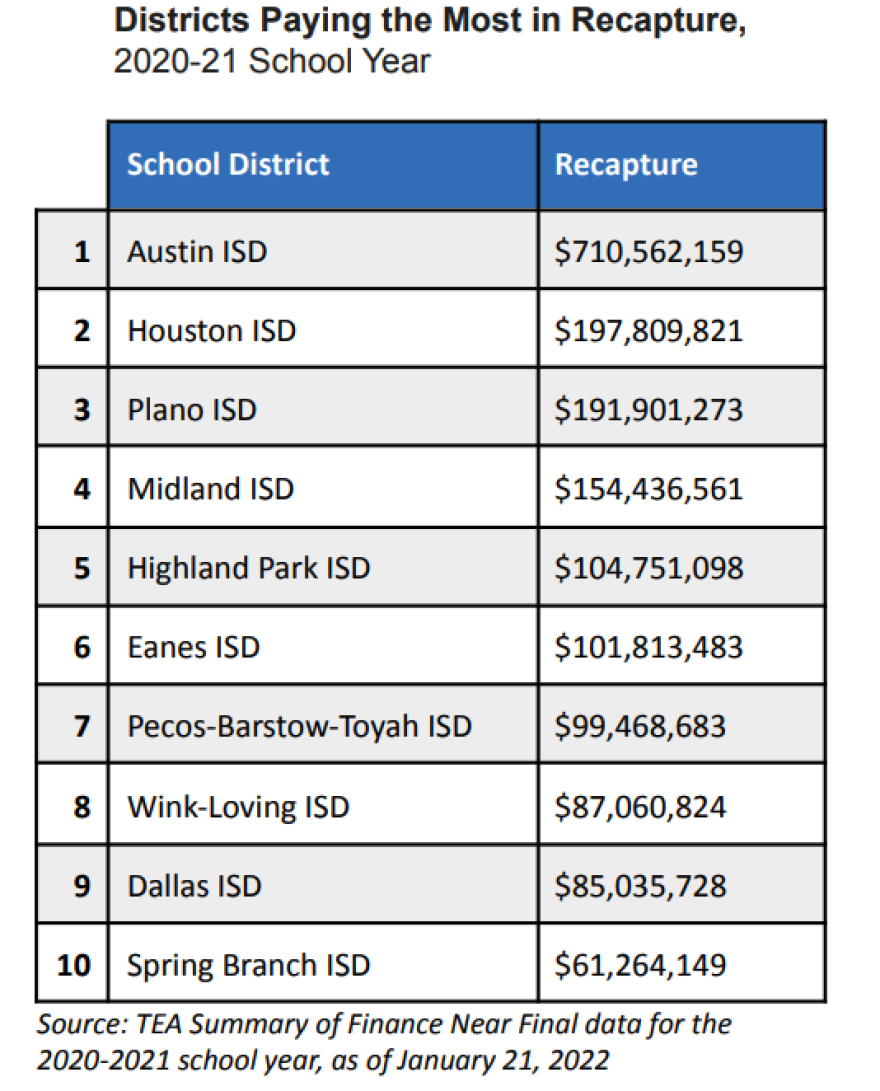The Austin Independent School District is sending more taxpayer dollars than any other school system to the state’s so-called recapture program, a new study finds. The decades-old system, known commonly as “Robin Hood,” is meant to balance resources among less property-wealthy school districts, with the goal of leveling out the per-student spending across all districts statewide.
Using data from the Texas Education Agency, the Texas School Coalition study found Austin ISD paid more than $710 million in the 2020-2021 school year. For context, that’s three-and-a-half times more than what Houston ISD paid. Houston is the state’s largest public school district, serving 196,000 students, compared to Austin’s 75,000.
The total AISD paid is more than remittances from the three districts below it on the list — Houston, Plano and Midland ISDs — combined.

Austin ISD's payments to the program have consistently dwarfed other districts’ over the last decade. During that time, AISD has seen declining enrollment while property values in the area have skyrocketed.
That puts the district at a distinct disadvantage, especially since nearly half the district's students qualify as economically disadvantaged, the TSC study notes.
The study calls on Texas lawmakers to revamp the program in its next legislative session.
Back in 2019, payments into the program were projected to balloon to $6 billion within the next five years. That year, state lawmakers passed sweeping bipartisan legislation that eased some of the tax burden on school districts. But because property values have soared since then, the report found, the program brought in $1.4 billion more than what was forecast.
The study authors argued part of that $1.4 billion went toward balancing the state’s budget. Supporters of recapture say, however, that money from recapture must be dedicated to school funding.
TSC called on lawmakers to allow surplus money from the program to go only toward public education funding.
“Those dollars should be directed straight back to public education for the benefit of all students,” the study's authors wrote . “In other words, if taxpayers are paying more than expected in school taxes, it should actually be the schools that benefit.”















